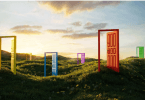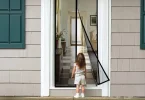Public spaces are more than just open areas in cities—they support a wide range of everyday interactions, from casual hellos to spontaneous conversations, helping build social trust and a sense of belonging. As cities become denser and digital connections grow, the need for meaningful places to connect has never been more critical. From expansive plazas to quiet courtyards, Eric Wippman shows how every detail has the potential to invite interaction.
Contents
The Value of Public Spaces in Everyday Life
Public spaces shape how people experience and engage with their communities. Parks, plazas, streetscapes, and libraries provide more than just physical settings—they support informal moments of connection that strengthen social bonds. In cities where daily life moves quickly, these backdrops offer rare chances to slow down.
In neighborhoods where public life thrives, it’s often because the environment encourages people to linger, observe, and engage. Urban dwellers, especially those in high-density areas, rely on these shared moments to feel grounded in their surroundings.
Key Design Principles
Designing begins with accessibility. When a space welcomes people regardless of age, ability, or background, it becomes a shared ground where interactions can take place. Wide paths, ramps, and clear signage are subtle yet powerful tools in making everyone feel included. A well-lit, barrier-free atmosphere tends to draw a broader range of visitors.
Comfort is another key factor. People tend to stay longer in areas that offer shade, seating, and protection from noise or harsh weather. In Copenhagen, many public squares include movable chairs and soft lighting, allowing users to shape their experience and feel at ease. Open sightlines and gentle transitions between spaces also contribute to a sense of safety, making it easier for people to engage with their surroundings and each other.
How Layouts Encourage Interaction
Spatial arrangement has a quiet but powerful influence on how people behave in public. Placing seating in circular patterns, designing walkways that curve gently through green spaces, or clustering amenities together all help encourage organic gatherings. Rather than separating functions, successful layouts encourage overlap.
Natural elements like trees, water, and stone soften the edges of urban life and invite people to linger. In Tokyo’s Midtown Garden, a mix of lawn, art, and shaded paths creates a tranquil yet social atmosphere. Features like water fountains or public art often become focal points where interactions naturally unfold. Flexibility also matters—spaces that can host a lunchtime picnic one day and a small concert the next tend to stay relevant with the community’s changing needs.
Not every space needs to be large; even a modest courtyard can become a vibrant hub when the layout gently encourages people to pause and share the space. Thoughtful design choices allow connection to unfold without pressure. In some cases, a simple bench with a view can spark moments of connection.
Events breathe life into public spaces, transforming them from passive backdrops into active gathering points. A weekend farmers market, an outdoor movie screening, or a pop-up art installation can draw in both regular visitors and newcomers, creating opportunities for conversation and shared experiences. These moments often serve as anchors, drawing people in and giving them a reason to return.
Even small interventions can make a big difference. A community-painted mural, a few benches added near a bus stop, or a garden plot in an unused lot can shift how people relate to a place. In neighborhoods where resources are limited, these low-cost, high-impact changes demonstrate that thoughtful design doesn’t always require grand budgets—just a willingness to listen and adapt.
Real-World Examples
Bryant Park in New York City is a strong illustration of how thoughtful design can transform a space. Once underutilized, it now thrives with daily chess games, open-air yoga, and movable chairs that promote flexible use. The park feels both lively and relaxed, offering something for everyone without overwhelming the senses. It’s a testament to how reinvestment in a public space can reshape a community’s relationship with it.
Across the world, Melbourne’s Federation Square combines digital art, public events, and open seating to create a dynamic space that attracts both tourists and locals. Its success lies not just in its scale but in how it encourages people to stay, watch, and interact.







